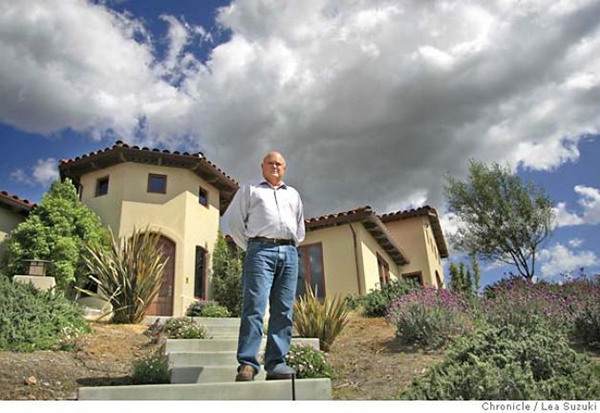
Frederick Corson’s 5000 square foot home in Northern California is one of the largest in the area, yet its cooling and heating costs are very low. Instead of using traditional sources of heating and cooling, Carson fitted the house with a ground-source heat pump known as a geothermal heat pump. Such a heat source is environmentally friendly and sustainable, while it also keeps the costs of heating and cooling the house minimal.
A geothermal heat pump is installed by first drilling holes 200 to 300 feet deep and then inserting U-shaped tubes into them. These earth-heat exchange tubes are then connected to a primary heat exchanger unit inside the house. The tubes are filled with a solution of water and alcohol, such as ethelyne glycol, which prevent corrosion and freezing. The system also consists of a primary heat exchanger, a fluid recirculation pump, and a separate compressor/expander system connected to a secondary heat exchanger and a fan blower.

This whole system works on the principal that regardless of the temperature on the Earth’s surface, it is always 60 degrees a few feet underground. However, ground source heating works best in warmer environments. The recirculation pump forces the water and alcohol solution through the tubes in the ground. When the solution enters the house from the ground it is warmed to 60 degrees and this solution then enters the primary heat exchanger. Here it transfers its heat to a second closed-tube system, which is filled with a refrigerant that has a lower boiling point than water.
The refrigerant is a cooled gas at this stage, and does not mix with the fluid, which again passes into the ground to be heated again. The refrigerant is conducted to a compressor, which turns the gas into a liquid and makes it heat up considerably. Since the refrigerant is already heated to a higher temperature before compression, it takes far less electrical power to get the same amount of heat out of it.
From here the heated, compressed refrigerant goes into the secondary heat exchanger, where a fan is used to blow air over the hot liquid-filled pipes. This heats the air as it moves into ducts that conduct the heat throughout the structure. This process works continuously and every kilowatt of electricity used by it generates about three units more of heat than a conventional system. The system is also used to provide hot water for the household.
The Corsons turn on this heating system in November and keep it on through April. In the summer, the system can also be reversed to provide air conditioning for the house. To do this, the system pulls the warm air out of the house and transfers it into the ground.

Leave a Reply
You must be logged in to post a comment.